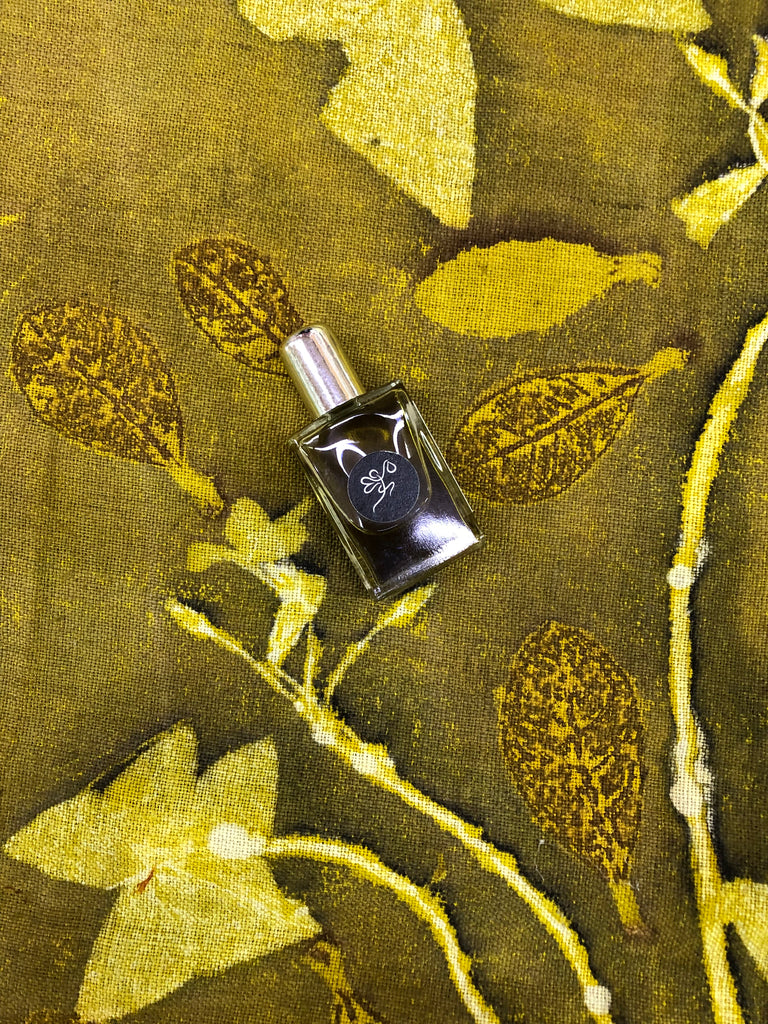Reseda & Weld: Perfume & Dye Plants
Last weekend, we explored the intersection between natural perfume and natural dyeing. Weld is a star dye plant whose darling sister, mignonette (Reseda odorata) used to be produced as an absolute for perfume. White Reseda (Reseda alba) grows in Israel every winter and spring: its modest weedy appearance and rather stinky leaves will not prepare you for the magical scent of the flowers - a marriage of tuberose, violet leaf, orange blossom and galbanum. It was a fragrance I was totally oblivious to growing up, and only discovered 3-4 years ago, after moving back here, completely by chance.
In the photo above is my new Reseda perfume (it was features in the 2022 Spring Subscription Box), on a stunning backdrop of weld-dyed and ecoprinted fabric by Hasia Naveh. Below is mignonette in its natural habitat in my village, Clil.














